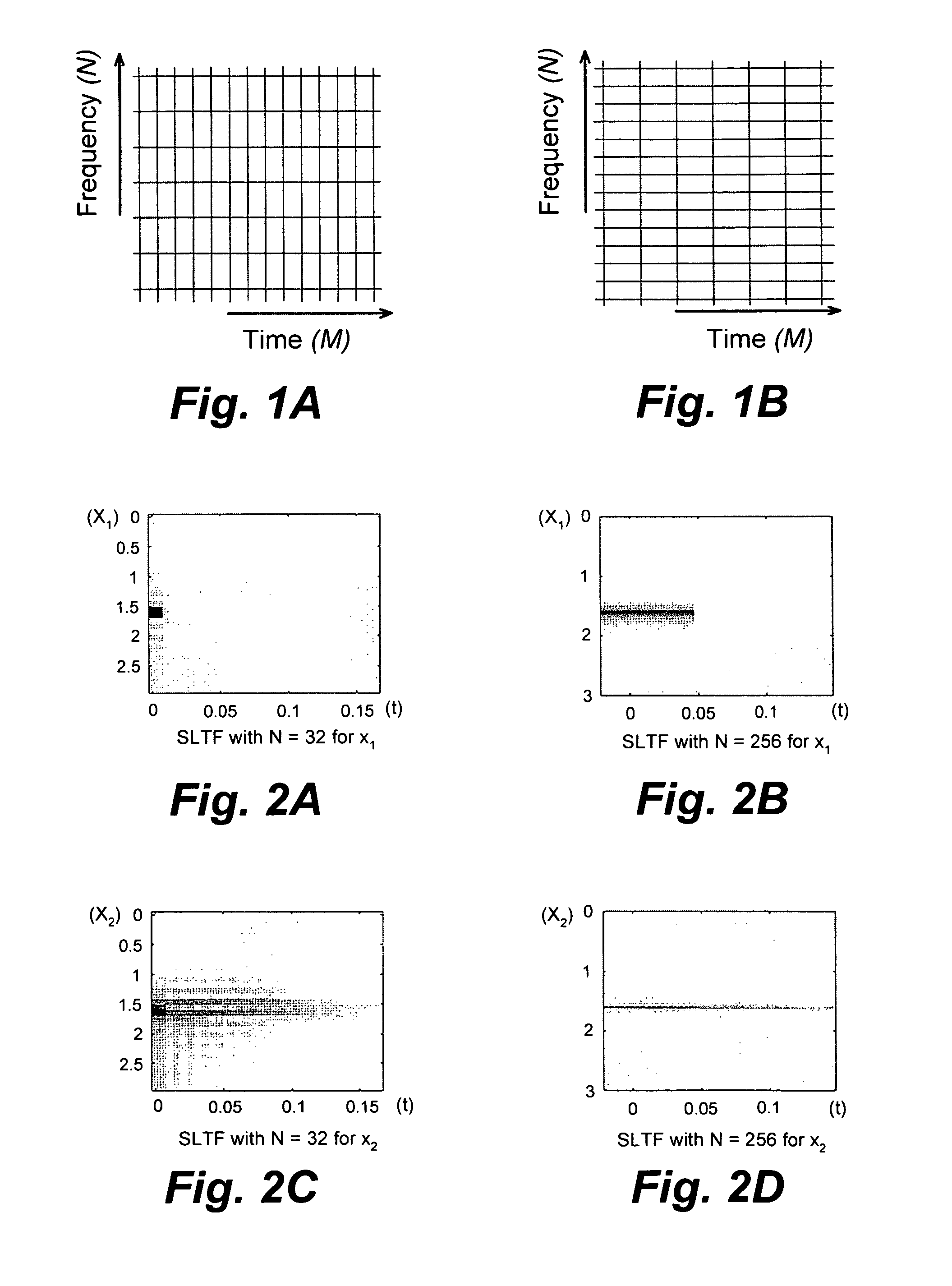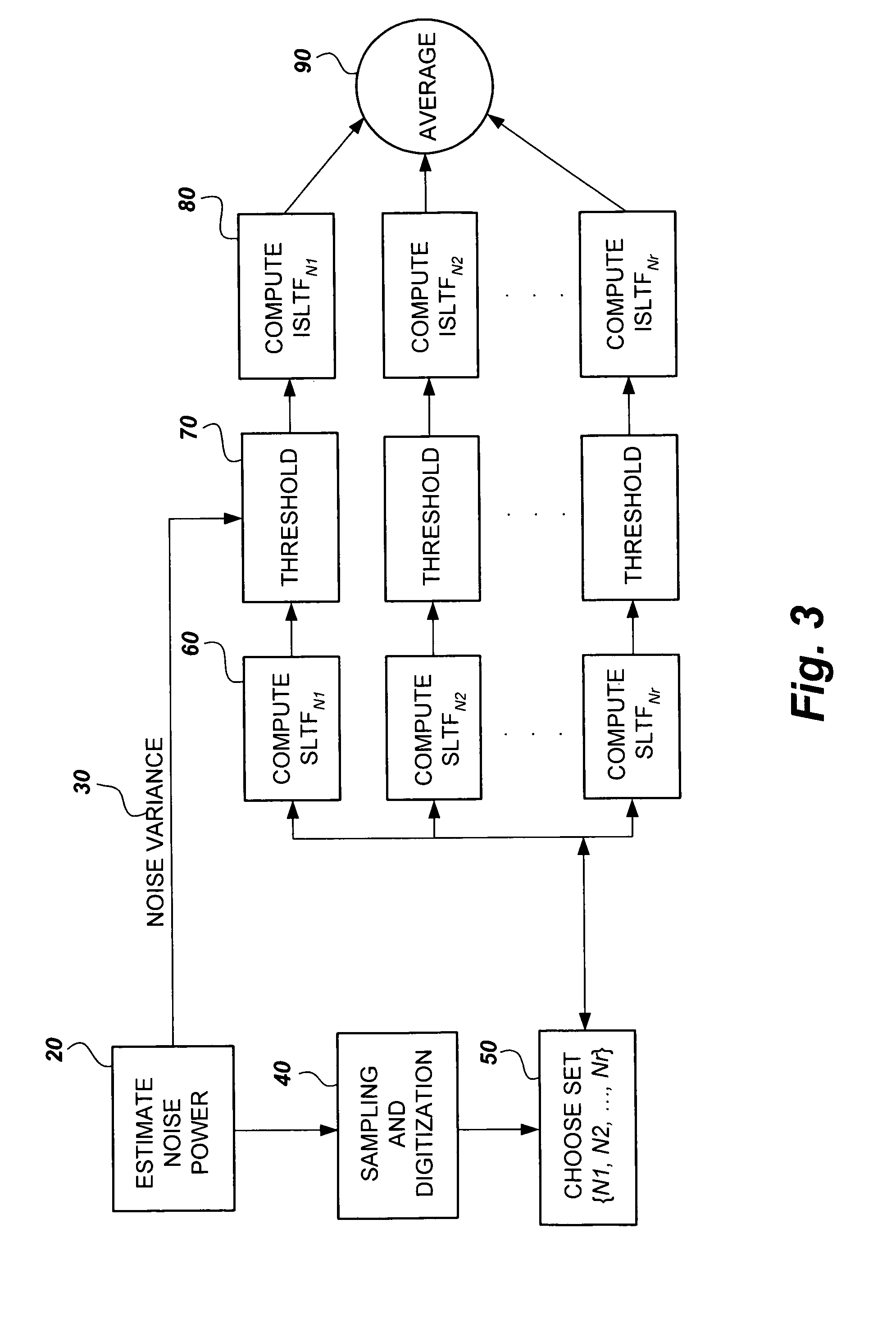Method for removing noise from nuclear magnetic resonance signals and images
a nuclear magnetic resonance and noise removal technology, applied in the field of digital signal processing techniques, noise filters, nuclear magnetic resonance spectroscopy, etc., can solve the problems of substantial increase in acquisition time, limiting the signal-to-noise ratio (snr) of nmr signals and images, and not being able to achieve the effect of reducing patient discomfor
- Summary
- Abstract
- Description
- Claims
- Application Information
AI Technical Summary
Benefits of technology
Problems solved by technology
Method used
Image
Examples
Embodiment Construction
[0039]Referring to FIG. 3, a flow chart diagram representing the steps in a method for removing noise from NMR signals and images is shown. At block 20, the NMR signal or image (both and NMR spectroscopy signal and an MRI image signal ma be referred to generally as an “NMR signal” in the present application) is first processed to estimate the noise variance. An example of such processing would include providing a relatively large recording time for at least one sample. The noise variance σ would then be estimated by calculating the power of the last data points, which are entirely noise.
[0040]At block 40, the NMR signal / image is next sampled and digitized. At block 50, a set N={N1, N2, . . . , Nr}, of r suitable values of N is then determined according to the time span, the sampling period, etc. The stable linear time-frequency (SLTF) transform is specified by its number of analysis samples in frequency, N, which controls the time and frequency resolutions in the time-frequency (TF)...
PUM
 Login to View More
Login to View More Abstract
Description
Claims
Application Information
 Login to View More
Login to View More - R&D
- Intellectual Property
- Life Sciences
- Materials
- Tech Scout
- Unparalleled Data Quality
- Higher Quality Content
- 60% Fewer Hallucinations
Browse by: Latest US Patents, China's latest patents, Technical Efficacy Thesaurus, Application Domain, Technology Topic, Popular Technical Reports.
© 2025 PatSnap. All rights reserved.Legal|Privacy policy|Modern Slavery Act Transparency Statement|Sitemap|About US| Contact US: help@patsnap.com



